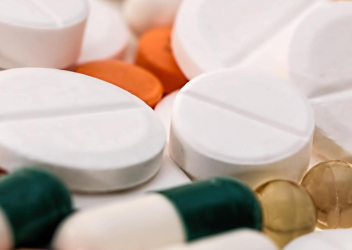Research In Action
Research In Action
Breadcrumb

The number of intentional drug poisonings among adolescents and young adults is growing at an alarming rate, and poison control centers across the country are on the front lines of experiencing this sobering trend.
A new study published in the Journal of Pediatrics found that 1.6 million intentional, suspected-suicide attempt cases in children and young adults ages 10 to 24 were reported to US Poison Control Centers from 2000 to 2018, and the annual number of suicide attempts doubled over the study period. The majority of the 1.16 million cases (71%) involved females, with a drastic increase reported from 2011 to 2018.
We are gravely concerned by any misuse of prescription medications. According to the recent CDC Monitoring the Future survey, 15.5 percent of all high school seniors have reported misusing a prescription drug in their lifetime, and over 1 in 3 indicated that narcotics would be “fairly easy” or “very easy” to get. Teenage drug misuse is of particular concern, as we know that most who have a substance abuse disorder begin using before they are 18 years old.
We have also seen an increase in suicide and self-harm attempts by drug poisoning reported to the Poison Control Center at CHOP. We are working with healthcare providers, public health agencies, and families to increase awareness of this growing problem and to help prevent intentional drug poisoning through educational outreach.
Preventing Intentional Drug Poisonings
- Encourage families to safely store their medications. According to the Partnership for Drug-Free Kids, two-thirds of teens and young adults who report abuse of prescription and over-the-counter medicine are getting it from friends, family and acquaintances. To prevent access, families should monitor and secure all unused prescription and over-the-counter medications in the home.
- Encourage families to take note of how many pills are in each prescription bottle and keep track of refills. The need for earlier than anticipated refills could indicate a problem.
- Control the use of a child’s prescribed medicine by monitoring dosages and refills, especially with medicines known to be addictive and commonly abused, such as opioids (prescription pain relievers), benzodiazepines (sedatives and anti-anxiety medications) and stimulants (ADHD medications).
- Encourage relatives to regularly monitor the medicines in their homes as well and to make them aware of the risks of not doing so.
- Avoid purchasing large quantities of OTC and prescription medications, especially if someone in your household has a history of depression.
- Secure all prescriptions and OTC medications in a safe place, such as a locked cabinet that adolescents or young adults cannot access.
- Encourage families to safely dispose of unused or expired medicines: This is critical for protecting families and communities, including risk-taking friends of teens and other guests who may be on the lookout for prescription drugs.
- First choice: Utilize a drug take back site. Encourage families to locate their closest year-round take back site by entering their zip code here, and to get in the practice of taking back their prescription medicines.
- Second choice: Safe home disposal. The Poison Control Center at CHOP offers families these safe home disposal tips.
- Third choice: Food and Drug Administration (FDA) Flush List. If a drug take back site is not available, families have the option to flush a small list of dangerous medications, most of which are opioids. Over 9,500 children under the age of 6 are hospitalized annually for ingesting someone else’s FDA Flush List drug. Access the list here.
- Encourage families to pay attention and talk to their teens and to seek help when needed: Limiting the quantity and controlling access to medications in the home is only part of the solution. Encourage families to maintain situational awareness about what is going on in their teens’ lives and to have open conversations about mental health, self-care, and risks of drug abuse and development of substance use disorders.
- Suicide Prevention: Guidance on how to talk to someone who may be considering suicide can be found here. The Suicide Prevention Lifeline is also always available at 1-800-273-8255.
- Drug Abuse: For free one-on-one guidance, parents can visit the drugfree.org website and connect with a trained Helpline specialist.
For more information on preventing intentional medication poisoning, call the experts at the Poison Control Center at CHOP at 1-800-222-1222. Information and treatment guidance is offered to the public and healthcare professionals 24/7, at no charge.




